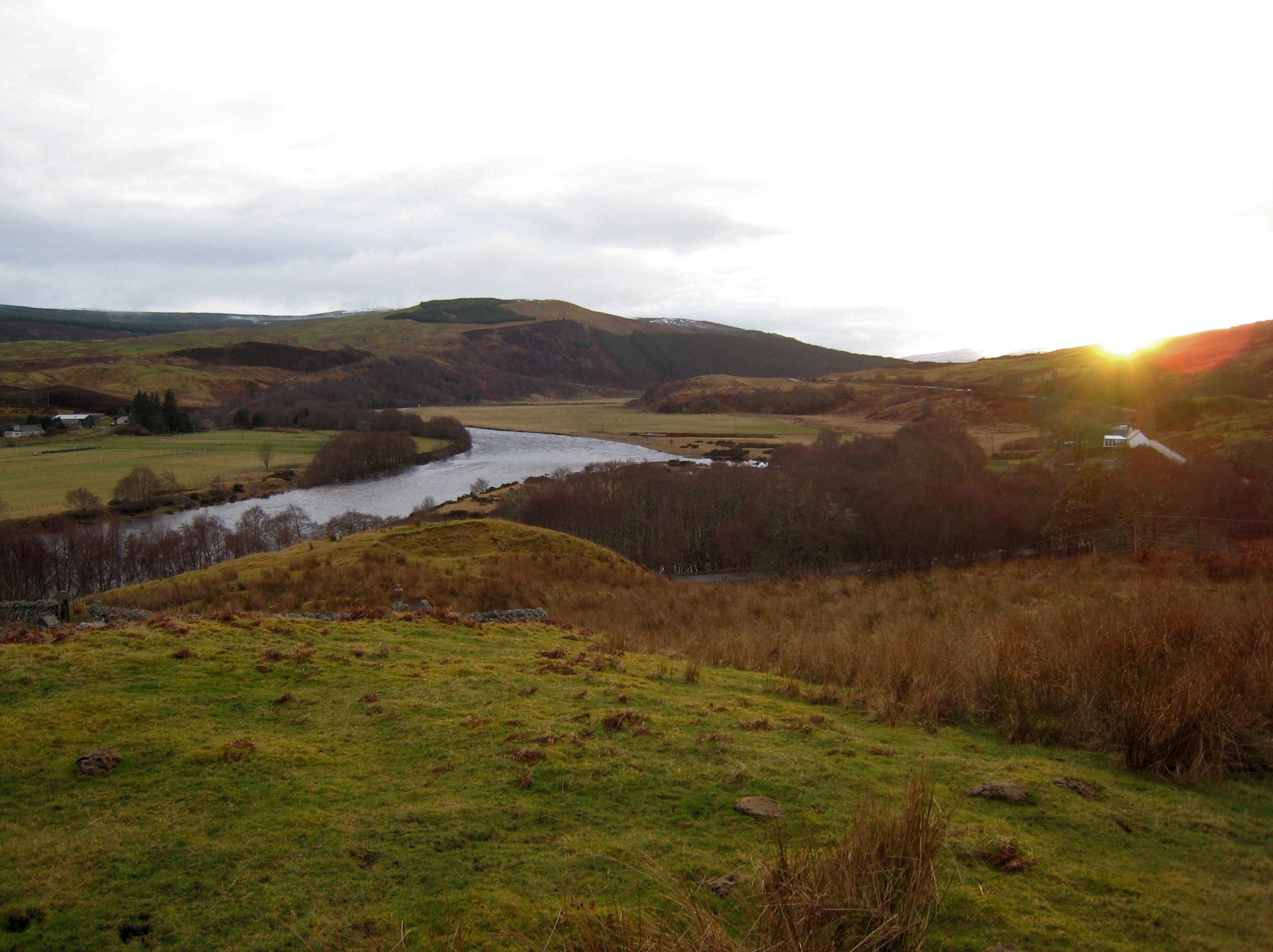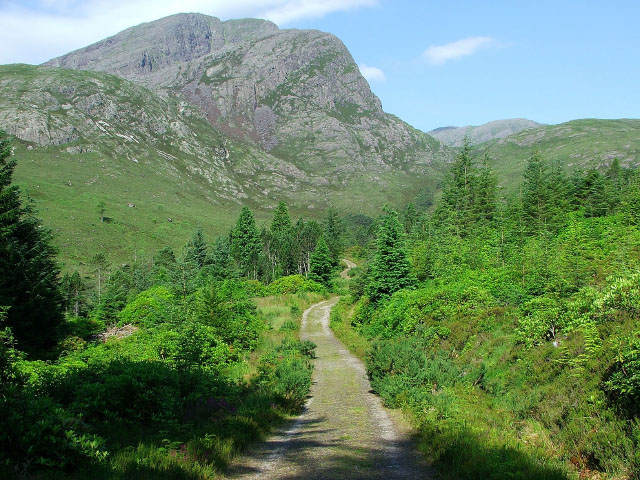Discover Clan Mackay History: A Heritage of Valor and Tradition
by Aimee Li on Jul 13, 2024
Table of Content
I. Introduction
Clan Mackay has a storied history that stretches back centuries, deeply rooted in the rugged landscapes of northern Scotland. Known for their fierce independence and warrior spirit, the Mackays played significant roles in the region's turbulent past. From their origins in the medieval Highlands to their involvement in major historical conflicts, Clan Mackay's legacy is one of resilience and strength.
This article delves into Clan Mackay's history, highlighting their notable contributions and enduring influence on Scottish heritage.
1. An Overview of Clan Mackay History
The Clan Mackay's history is rich and storied, spanning centuries within Scottish heritage. Originating from the northern part of Scotland, specifically the area of Strathnaver in Sutherland, the Mackays had a major impact on the eventful history of the Highlands.

In the 14th century, Donald Mackay supported Robert the Bruce in the Wars of Scottish Independence, earning lands and titles that bolstered the clan's power. The 15th century saw the Mackays embroiled in feuds with neighboring clans but expanding their territory. The 18th century brought division during the Jacobite risings and significant upheaval during the Highland Clearances, leading many Mackays to emigrate. Despite these challenges, the clan maintained its identity.
Today, Clan Mackay is celebrated for its enduring spirit. The Clan Mackay Society preserves its heritage, and the clan's motto, "Manu Forti" (With a Strong Hand), reflects its resilience. The ancestral seat, Castle Varrich, and the Mackay tartan remain symbols of its rich history.
2. Clan Mackay History: The Origin of Clan Mackay

In his 1906 publication, "The Book of Mackay," historian Angus Mackay examines and contrasts the lineages of the early leaders of Clan Mackay as presented by two historians: Sir Robert Gordon from the 17th century and Alexander Mackay of Blackcastle from the 18th-19th century. Despite some commonalities, the two genealogies display notable discrepancies concerning the ancestry of the Mackay chiefs. Gordon's account indicates a shared ancestor with the chiefs of Clan Forbes and Clan Farquharson, a connection attributed to a robust alliance during the 16th century.
Conversely, Angus Mackay asserts that the Blackcastle Manuscript offers a more reliable lineage account. It posits that Iye Mackay, the inaugural chief of Clan Mackay, born circa 1210, was a descendant of Malcolm MacHeth, the 1st Earl of Ross. The manuscript hints at a connection between Malcolm MacHeth and the early rulers or Mormaers of Moray. It also ties the Mackays' migration to Strathnaver to disputes with King Malcolm IV, resulting in their establishment and formation of alliances in the northern region. This account suggests that Kenneth MacHeth, who met his end in 1215, could be the progenitor of the Stathnaver Mackays. Following his demise, Iye Mackay assumed the role of chief and married the daughter of the Bishop of Caithness in 1263.
II. Clan Mackay History

1. Wars of Scottish Independence
Major-General Stewart stated that Clan Mackay sided with Robert the Bruce during the Battle of Bannockburn in 1314. However, in the late 14th century, tragedy struck when Chief Iye Mackay and his son were murdered at Dingwall Castle by Nicholas Sutherland, a leader from a junior branch of Clan Sutherland.
This incident sparked intense violence, including a retaliatory attack on Dornoch in 1372, which resulted in the cathedral being set on fire and several Sutherland men being hanged in the town square. Eventually, the feud simmered down as both sides were called upon to unite against a common enemy - the English.

2. In the 15th century
In 1403, Clan Mackay and Clan MacLeod of Lewis fought at the Battle of Tuiteam Tarbhach because MacLeod discovered his sister had been mistreated and decided to raid Strathnaver and Brae-Chat in Sutherland. Unfortunately, MacLeod was killed during the battle. In 1411, Chief Angus Du Mackay, 7th of Strathnaver, supported the Stewart Confederacy when Donald of Islay challenged for the Earldom of Ross.
Donald was defeated and captured at the Battle of Dingwall but later made amends with Angus by marrying his sister, Elizabeth, showing Mackay's growing influence. At the Battle of Harpsdale in 1426, Angus Du Mackay and his son Neil fought against Caithness, resulting in Neil being taken captive by King James I.

From 1429 to 1433, Angus Du Mackay led Clan Mackay to victory over Clan Sutherland in the Battle of Drumnacoub, a conflict documented by historians like George Buchanan and John Pinkerton. In 1464, Clan Mackay, under Angus Roy Mackay, 9th of Strathnaver, teamed up with Clan Keith to defeat Clan Gunn of Caithness in the Battle of Tannach. Throughout the late 15th century, Clan Mackay and Clan Ross were in constant conflict, leading to battles such as the Battle of Tarbat in 1486, where the Mackays initially lost but then emerged victorious in the Battle of Aldy Charrish against the Rosses.
3. In the 16th century
In the late 15th and early 16th centuries, Chief Iye Roy Mackay, 10th of Strathnaver, backed the Scottish Crown in the face of Donald Dubh's rebellion. According to Clan Cameron tradition, there was a win in 1505 over a combined force of Clan Mackay and Munros at the Battle of Achnashellach. In 1513, Chief Iye Roy Mackay and his brother John Riavach Mackay led the Clan Mackay at Flodden, resulting in significant losses. Clan Mackay also took part in the Battle of Glasgow in 1544 alongside the Earl of Arran, and in 1548, they were involved in the Siege of Haddington.

During the Siege of Borve Castle in 1555, Chief Iye Du Mackay was captured by the Sutherlands, then taken to Dumbarton Castle, and later moved to Edinburgh Castle. In 1562, Clan Mackay fought in the Battle of Corrichie, supporting Mary, Queen of Scots, against George Gordon, the 4th Earl of Huntly. William Mackay, 1st of Bighouse, helped the Clan Gunn defeat the Clan Sinclair at the Battle of Allt Camhna in 1586. Shortly after, the Mackay of Aberach branch sided with the Earl of Sutherland in defeating the Clan Gunn at the Battle of Leckmelm. Chief Huistean Du Mackay, 13th of Strathnaver, formed an alliance with the Earl of Sutherland in 1588 and married his daughter the next year.
4. In the 17th century
Thirty Years' War
In April 1616, Chief Donald Mackay received a knighthood from the king while visiting London with his uncle, Sir Robert Gordon. By 1626, Sir Donald Mackay had joined the Thirty Years' War in Denmark's army, leading 3000 men under Count Mansfeld and Colonel Robert Monro. He was later granted the title of Baronet of Nova Scotia in March 1627 and was made Lord Reay in 1628. While serving in Germany in 1630, he played a role in capturing Stettin and Colberg.
In 1631, Charles I of England permitted Lord Reay to recruit soldiers for Gustavus Adolphus of Sweden. However, he encountered difficulties, such as imprisonment in the Tower of London after a duel with David Ramsay. The death of Gustavus Adolphus in 1632 caused issues for Lord Reay in receiving his financial compensation from the king.
Civil War
In 1638, Donald Mackay reluctantly agreed to sign the Covenant with his son because of his loyalty to Charles I. But when Charles I was executed in 1649, plans to make Mackay the Earl of Strathnaver were stopped. He passed away in exile in Denmark in February 1649. In 1651, warriors from Clan Mackay fought in the Battle of Worcester alongside the Duke of Hamilton, backing Charles II.

In 1680, George Mackay inherited the title of the 3rd Lord Reay while being looked after by his grandfather, Sir George Munro. In 1689, General Hugh Mackay placed 100 soldiers from the Mackay clan in Brahan Castle to keep an eye on the Mackenzies for William, Prince of Orange. Unfortunately, General Mackay met his end at the Battle of Steinkirk in 1692.
5. In the 18th century
Jacobite rising of 1715

In 1715, during the Jacobite rising, the Clan Mackay supported George I of Great Britain over the Jacobites. They protected Inverness Castle and participated in the Skirmish of Alness against Mackenzie, Earl of Seaforth. Furthermore, in 1719, 80 soldiers from Clan Mackay fought in the Battle of Glen Shiel and triumphed over the Jacobites.
Jacobite rising of 1745

In 1745, Clan Mackay supported the British Government once more during the Jacobite rising. They formed the Clan Mackay Independent Highland Companies, with help from Loudon's Highlanders regiment, and successfully intercepted gold intended for Charles Edward Stuart, the Jacobite leader, in the Skirmish of Tongue. Ensign John Mackay led the Clan Mackay Independent Highland Companies in the Battle of Littleferry in 1746, where they defeated the Jacobites and captured George Mackenzie, 3rd Earl of Cromartie, at Dunrobin Castle.
III. The later clansmen of Clan Mackay
The Mackay's Society was established in Glasgow in 1806. During the Battle of Waterloo in 1815, the 79th Highland Regiment of Foot formed a square to defend against French Cavalry. Piper Kenneth Mackay bravely marched out of the square playing the tune War or Peace and received Silver Pipes from the King for his courage. Between 1815 and 1818, the Highland Clearances affected the Mackay lands, displacing people to make space for sheep. In 1829, Eric, 7th Lord Reay, sold the Reay estate to the Countess of Sutherland.
In 1865, David Mackay earned the Victoria Cross by capturing the colors of the Punjabis during an attack on the Sercunderbah fortification in India. The mutineers were from the 2nd Battalion of Punjabis, the only Sikh regiment to revolt. Later that day, David Mackay was wounded while assaulting another fort at Shah Neijeef and returned to Britain for recovery.
In 1875, when Eric Mackay, the 9th Lord Reay, passed away without any children, the title went to the family branch in Holland, who were descendants of John Mackay, the 2nd Lord Reay. Aeneas Mackay, a Baron in the Netherlands and Vice President of the Council of State became the 10th Lord Reay after his father died in 1876.

His son, Donald James Mackay, then became the 11th Lord Reay and was granted the title of Baron Reay of Durness in the United Kingdom in 1881, giving him a seat in the House of Lords. He served as Governor of Bombay from 1885 to 1890, Under-Secretary of State for India from 1894 to 1895, and was also the Lord Lieutenant of Roxburghshire. In 1900, during the Battle of Crow's Nest Hill in North Johannesburg, South Africa, John Frederick MacKay, who was with the Gordon Highlanders, earned the prestigious Victoria Cross.
Set sail on an odyssey through the illustrious annals of Clan Mackay with our handpicked collection of tartan creations. Embody the indomitable spirit that characterizes the Mackay clan, weaving a piece of this noble history into the fabric of your daily existence:
IV. Conclusion
Frequently Asked Questions
What was the Mackay clan known for?
Clan Mackay is famous for long-running feuds with several neighboring Highland clans, including Macleod of Lewis, Ross, and Sutherland. The Mackay feud with Clan Sutherland is one of the most well-documented and was ongoing between the 14th and 16th centuries.
Did the Mackay clan have a castle?
Castle Varrich in Tongue, Sutherland, was the ancient seat of the chief of Clan Mackay, but the chief later moved to the House of Tongue, Sutherland (still in private ownership).
What is the MacKay clan slogan?
MANU FORTI
They fought in many battles, both with their neighboring clans and against the rebelling Jacobite forces, and occupied a large amount of territory in the north of Scotland in the area once known as Strathnaver. The MacKay clan motto is "Manu forti" (With a strong hand), and the clan crest is a dagger.
Who is the chief of clan MacKay?
Aeneas Mackay: current clan chief.












